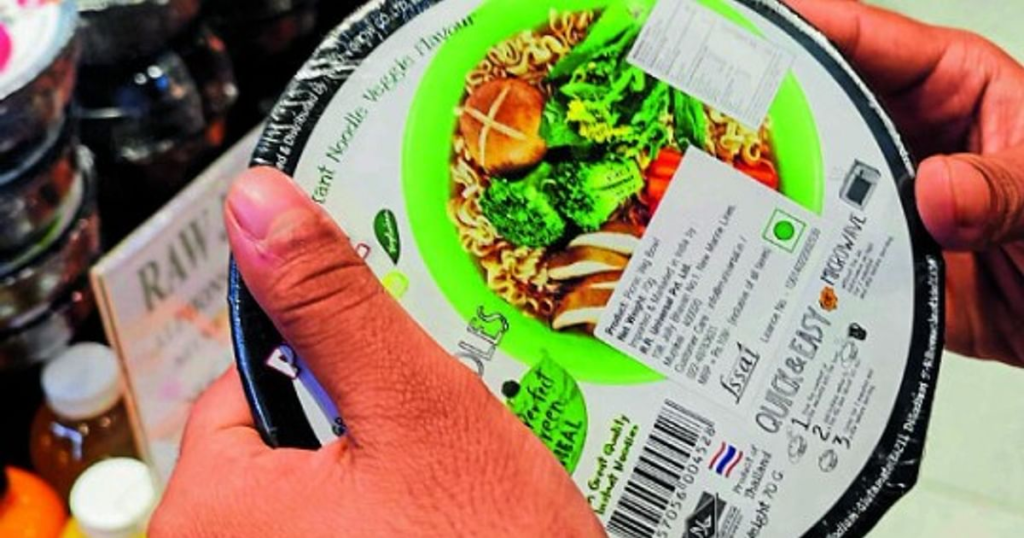In Bangalore, people are slowly becoming more aware of reading food labels beyond production date, expiry date and price. Experts say the public is keen to understand claims like “100% natural” on the front of the package and nutrition facts printed on the back of packaged food.
Over the past two weeks, food safety and nutrition consultants in the city have spoken about the importance of food labels on packaged products during events. June 7 was World Food Safety Day. In India, influencer Revant Himatsingka, aka FoodPharmer, launched an online campaign urging people to read food labels and question misleading claims by FMCG companies.
COVID-19 was the catalyst for this change, with an explosion of packaged foods like sprouted seeds and a surge in functional drinks, each brand claiming to be healthier than the other. “There were so many claims being made that people were both curious and confused,” Ranjani Raman, chief nutritionist at Nutrition Tattva, says of the growing frenzy.
Then came the Food Safety and Standards Authority of India (FSSAI), which passed the Food Safety and Standards (Labeling and Labelling) Rules, 2020. The agency's proposal for front-of-pack nutrition labelling was subsequently opposed, which would have awarded star ratings to products based on their salt, sugar and fat content. The rise of health influencers such as FoodPharmer and The Liver Doc, as well as celebrities investing in plant-based meat, has led to increased scrutiny.
But not everyone is willing to get educated: “When we reach out to schools to teach students how to read food labels properly, they think we're promoting packaged foods,” says Ramesh Agarwal, CEO of Food Safety Works.
Check the ingredients
Food labels can help you make informed choices, especially if you're health conscious or have health issues. Some products are not recommended for pregnant women or children, so heed warnings, says Ranjani.
She says the longer the ingredient list, the more highly processed the product tends to be. Plain oats and masala oats are good examples. If the ingredient list is full of unfamiliar terms, proceed with caution. “Mannitol, sorbitol and dextrose are hidden sugars. High fructose corn syrup (HFCS) is also a type of sweetener. Hydrogenated fats are another name for unhealthy fats like dalda,” she points out.
If you're trying to lose weight, look at the calories per serving and multiply that number by the total amount: “Be wary of products that list more than 200 calories per serving,” she says.
Too many complaints
Experts say labels like 'no preservatives added' and 'organic' need to be read carefully. “If the product is organic, look for Jaivik Bharat certification. Products may contain trace amounts of trans fat but be labelled as 'zero'. Also, you'll be surprised at how little actual soy milk there is in 'soya milk' in Tetra Pak,” says Ranjani.
Dr Mamata Mishra, founder of Health First, says consumers should buy healthy packaged foods with their eyes wide open, paying attention to detailed nutritional information, best before dates and allergens.
Her quick advice is that sugar free means no added sugar, and chewing gum and bubble gum don't need to have a best before date. She continues, “If the juice has very little to no pulp in it, it should be sold as juice, not juice. Packaged coconut water is reconstituted coconut water, not tender coconut water, and is sold as coconut juice.”
Agarwal also urges consumers not to be fooled by advertising claims. He gives the example: “What is cholesterol-free vegetable oil? Plants don't have cholesterol.”
He urges people to pay attention to sugar content. If added sugars make up a large portion of the total sugars, “that's a concern.” He says additives and preservatives are what consumers are most concerned about. INS numbers range from 0 to 199 (colorings), 200 to 299 (preservatives), 300 to 399 (antioxidants and acidity regulators) and 400 to 499 (thickeners, stabilizers and emulsifiers). “Pay attention to these codes and Google them for more information,” he says.
Be wary of packaged foods and even dietary supplements that claim to have medical benefits, such as reducing joint pain. “So brands turn to ingredient-based claims, such as printing the benefits of turmeric, which is acceptable,” he said.
“It leaves people wondering why they're not getting the results they want,” Dr Mamatha said of a common outcome of not reading nutritional fine print.
How consumers buy packaged foods
In 2023, Bengaluru-based Food Safety Works conducted a survey of 420 people to explore their behaviour when buying packaged foods. Key findings include:
53.6% of people always pay attention to food labels.
51.7% check the nutritional information.
The fact that 70.7% feel that calories are the most important thing.
47.4% check ingredients from time to time.
89% always check the expiration date.
30.7% sometimes check allergen or warning labels;
28.3% were aware of the FSSAI logo.
74% check for vegetarian and non-vegetarian logos.
61.2% would prefer organic health claims.
42.9% have never used customer care information to lodge a complaint.
Published on June 13, 2024 at 23:34 IST



